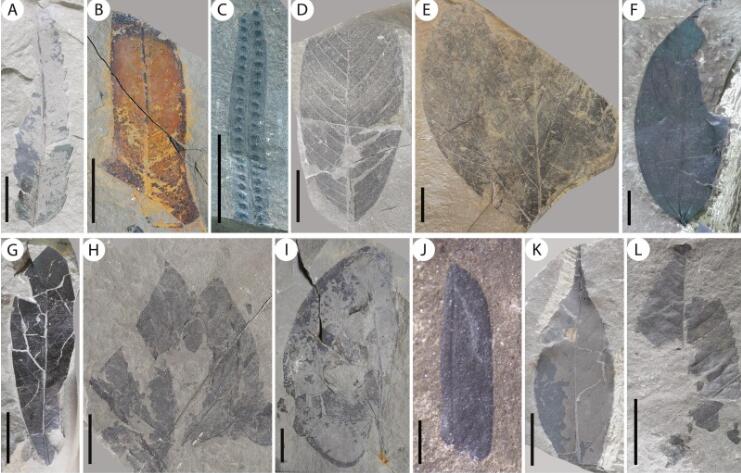Vietnam is known worldwide for its high plant species diversity and endemism. However, the evolutionary history of Vietnam's exceptional plant species richness remains poorly understood. Due to the paucity of Neogene plant fossil records, it remains unclear how the vegetation in northern Vietnam evolved, and what the driving factors were.
In a study published in Palaeogeography, Palaeoclimatology, Palaeoecology, researchers from Xishuangbanna Tropical Botanical Garden (XTBG) reported a newly discovered megafossil flora from the late Miocene of the Yen Bai Basin, northern Vietnam.
The researchers collected 302 plant megafossil specimens, mostly well-preserved leaves with detailed venation. They investigated the floristic composition, reconstructed the paleovegetation and used both the Coexistence Approach (CA) and the Climate-Leaf Analysis Multivariate Program (CLAMP) to estimate quantitatively the late Miocene climate of the Yen Bai Basin.
The late Miocene Yen Bai flora comprised 15 families, 20 genera, and 30 species, dominated by Fabaceae, Fagaceae, and Lauraceae with a large number of Sapindaceae, Annonaceae, Euphorbiaceae, Anacardiaceae, Hernandiaceae, Malvaceae, and Betulaceae. The megafossil flora suggested that the late Miocene vegetation in northern Vietnam comprised mixed tropical evergreen and deciduous broadleaved forest components.The overall floristic composition represented a seasonal tropical forest.
Quantitative paleoclimate reconstruction of the Yen Bai flora indicated a modern-like warm and humid tropical monsoon climate. It also indicated the relative stability of temperature seasonality and obvious seasonal variation in precipitation, the only difference from now being a lower precipitation of dry season. A monsoon climate type seemed to have persisted in northern Vietnam since at least the Paleogene, with demonstrable development from the middle Eocene to the late Miocene and maximum intensification in the middle to late Miocene.
"The study shows the influence of an Asian monsoon characterized by the seasonality of precipitation on the development of plant diversity in northern Vietnam," said SU Tao of XTBG.
Contact
SU Tao Ph.D Principal Investigator
Key Laboratory of Tropical Forest Ecology, Xishuangbanna Tropical Botanical Garden, Chinese Academy of Sciences, Mengla, Yunnan 666303, China
E-mail: sutao@xtbg.org.cn
Published: 22 November 2023

Pteridophyte and angiosperm components of the Yen Bai flora. (Image by HUANG Jian)

